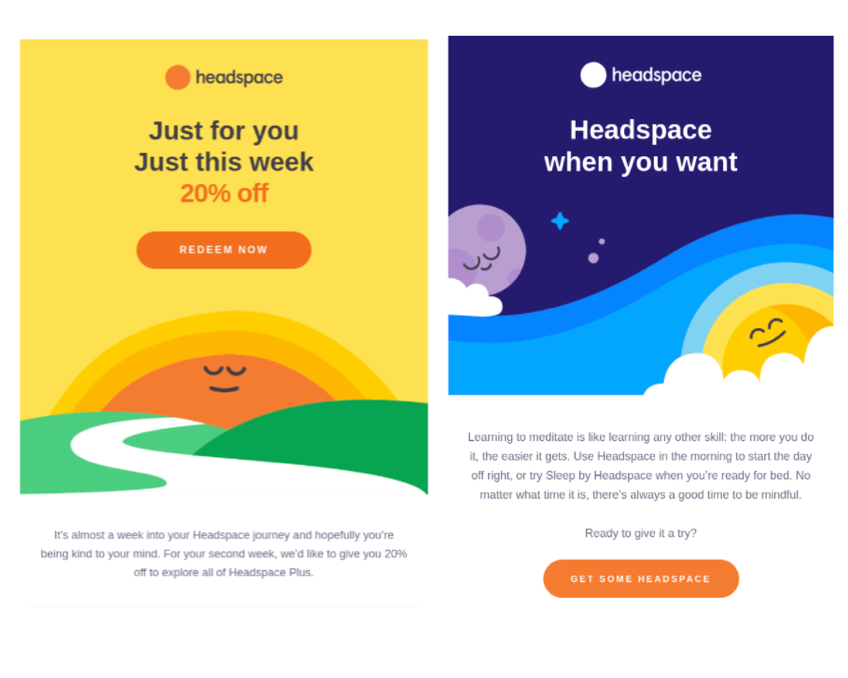Someone clicks your ad on Facebook, and they choose to purchase the item for sale. We’d be in Utopia if that’s how 100% of user interactions panned out. However, as you might have guessed, such immediate success is far from what happens in real life.
Many startups are hyper-focused early on with their ads’ click-through rate (CTR) and the conversion rate (CVR) for purchases. This is good information, but it leaves so much more to be desired.
Welcome to the First Touchpoint Misconception:

First Touchpoint Misconception. Image Credits: Jonathan Martinez
A bit of history
A great deal has changed since Google Ads (formerly AdWords) launched in 2000 with a scant 350 advertisers. By 2015, the number of advertisers, and thus competition, had ballooned to 4 million, according to Macquarie Research.
One surefire way to increase conversion rates across all touchpoints is to diversify messaging.
Paid social channels like Facebook launched with only one primary ad format. Today we have dozens of formats. What does this do? It emphasizes the importance of being more creative to get consumers to click on these ads.
This increased competition means that startups have become laser-focused on beating the opposition on initial clicks. I am a firm believer that amazing copy and creative can make or break paid acquisition. However, it is also too easy to get lost while focusing solely on the first touchpoint. I’ve seen this happen frequently at early-stage startups.
The common user pathway
Instead of a user converting right after clicking or viewing an ad, here’s what the journey to purchase usually looks like:

A common user pathway. Image Credits: Jonathan Martinez
I’m always surprised at how much the second, third, fourth, etc., touchpoints are ignored in analysis. I would much rather have a fully fleshed lifecycle than a CTR of more than 50%. Consider the example below:

Image Credits: Jonathan Martinez
Here, Startup A focuses only on the first touchpoint, and Startup B focuses on all touchpoints. While Startup B had half the overall number of clicks, it saw higher CVR due to retargeting and lifecycle emails, which led to the lower CAC.
Even in one or both of those scenarios, you won’t maximize your paid acquisition without retargeting, email marketing, and diversified messaging for each touchpoint.
How to tackle all touchpoints
Let’s break down the ways you can combat First Touchpoint Misconception. We’ll cover this topic through the lenses of retargeting, email marketing and diversified messaging.
Help TechCrunch find the best growth marketers for startups.
Provide a recommendation in this quick survey and we’ll share the results with everybody.
Retargeting
Every startup should have an “always on” retargeting campaign. In 99% of cases, it will be more cost-effective to acquire a retargeted user versus a net-new user. This can be a simple dedication of 5% total paid acquisition toward a retargeting campaign. If it proves fruitful, it can also be very robust with recency nesting and different user segments. A simple recency- and user-segmented structure for an e-commerce store can be something like:
- Last 30-day visitors
- Last 30-day adds to cart
- Last 90-day visitors
- Last 90-day adds to cart
With this structure, you’ll want to exclude the audiences in each of the campaigns so that there isn’t any overlap.
The beauty of this structure is that it allows you to funnel more spend into higher propensity retargeting buckets that are performing best. Without segmenting, it’ll be difficult to measure which audience pool is the best performer.
Email (and push) marketing
Many will argue that email marketing shouldn’t be turned on until after you’ve acquired a predetermined number of customers. I believe that email marketing should be turned on instantly. Why try to find product-market fit without giving it your best shot?
This isn’t to say that you should have nine fully fleshed-out drip campaign series set up on day one. Far from it. When a new lead comes in from a web or app campaign, leverage the emails you’ve recorded from the sign ups, as these users have shown some interest.
Below is what a simple drip campaign setup can look like:

A simple seven-day drip campaign. Image Credits: Jonathan Martinez
If a user signs up but doesn’t complete your conversion event, send them an email on day one (D1), D3 and D7. Each email can have different themes, such as including additional value props, social proof or discounting. It also doesn’t hurt to ask for feedback on the last message as to why they haven’t finished the funnel.
Diversified messaging
One surefire way to increase conversion rates across all touchpoints is to diversify messaging. The first message should be different from the second, and so on.
Start paying attention to how companies communicate when you engage with them. I can almost guarantee that you will see very educational sales messaging early on, with more social proof sprinkled into subsequent touchpoints.
Below are some of Headspace’s ads that lean heavily on the promotion of meditation: letting go of stress and being happy.

Facebook ads from meditation app Headspace. Image Credits: Jonathan Martinez
In Headspace’s email communications, they push more on discounts and how easy it is to get started (for example, that meditation can be done at any point in the day).

Emails from meditation app Headspace. Image Credits: Jonathan Martinez
I’m not saying you can’t have a discount code on your first and last touchpoint. Instead, start thinking about diversified messaging and experimenting with what styles resonate best at different stages.
Between the initial ad view, email/push sends, and retargeting, I strongly recommend that all touchpoints should carry slightly different flavors.
Leveraging resources
You are not alone in thinking about the various touchpoints. There are myriad resources that can help you extract valuable insights and knowledge. One of my favorites is the Facebook Ad Library, which is a repository of all the platform’s ads that are currently live. This library not only provides you with competitor intel — it also has valuable intel about others in the same verticals or brands who are simply running a great performance marketing program. Another gold mine is an email repository called Really Good Emails.
There are hundreds of other resources available, but I won’t start listing them all. Instead, I’ll leave you with one question: As a customer, how often do you purchase something on the first touchpoint?
